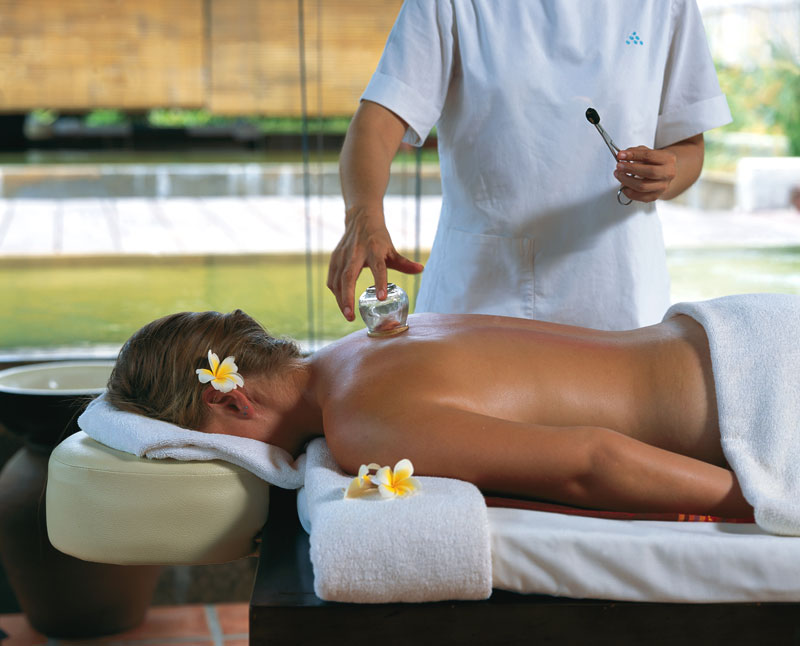Cupping
Fire cupping
|
The cups are roughly bell shaped with a capacity of about 4 fluid ounces. 8 to 12 cups are applied to the subject's back in two parallel 'vertical' columns, midway between the spine and each edge of the body; cups within each column are placed four inches apart measured from the center of the cup. There are several ways of heating the air in the cup with fire: 1. One can swab rubbing alcohol (minimum 90%) into the bottom of a cup, then light it and place the cup immediately against the skin. The seal thus created extinguishes the fire by cutting off its oxygen supply, preventing the person from being burned. The smaller the amount of alcohol, and the quicker the flame is extinguished by application of the cup, the better, so long as there is no risk of the cups falling off due to lack of a proper seal. Some experienced cuppers prefer the use of kerosene over alcohol, claiming it provides better ignition and thus greater suction. Methods 1 and 2 heat the glass to some extent and have a risk of burning the patient if not carefully executed. Method 3 risks the cotton falling off the insulating pad onto the patient's skin, and leaves the pad and cotton wadding inside the adhering cup which could be considered cumbersome. Baby oil massaged onto the skin prior to treatment causes a better seal to form, making it possible to use this therapy with less heating of the cup. It is often possible to slide the adhered cup around on the skin, preserving the suction seal as it glides. Care must be taken not to move the cup over protruding moles, skin tags, scabs, etc. The longer a cup is left on, the more of a circular mark is created. The skin pores are more open, and the patient may experience a sensation similar to sunburn. An application of about 20 minutes is average, for the back; however this varies with the individual. In no case should the cups be left in place if the subject reports noticeable discomfort.
|
 A-B-C Acupuncture Clinic
A-B-C Acupuncture Clinic

